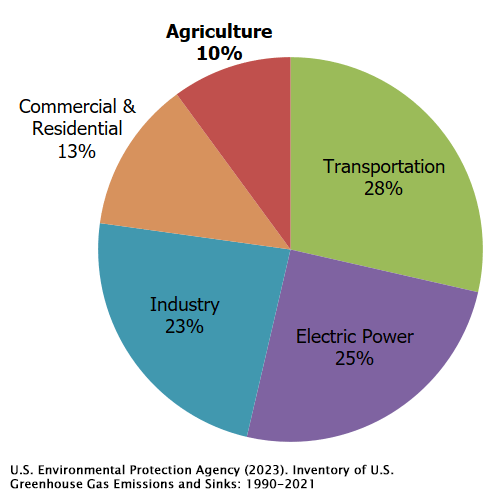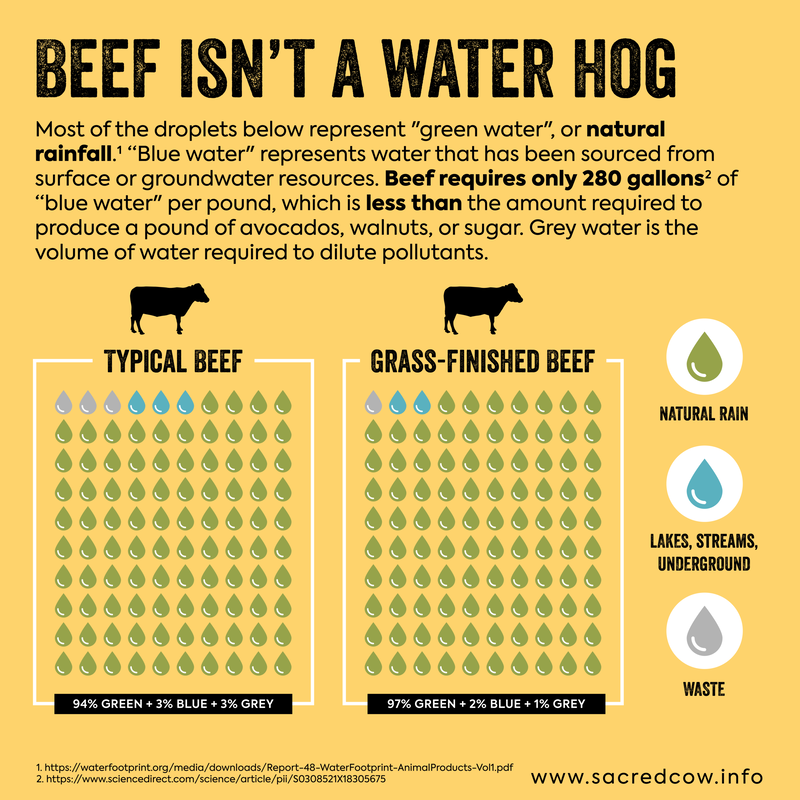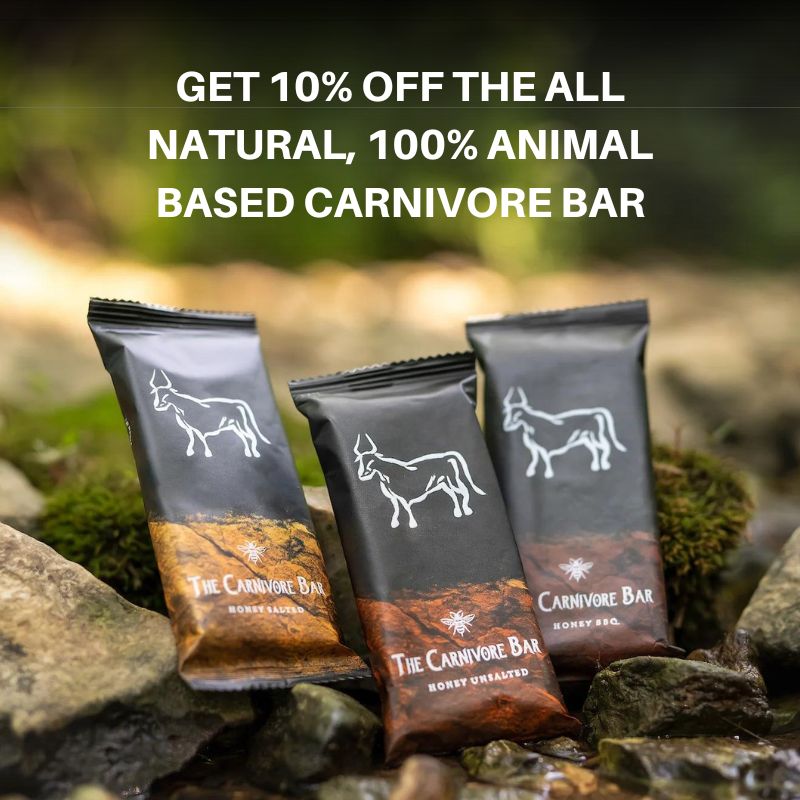|
THE COMPLETE
CARNIVORE DIET GUIDE
Learn how to lose weight, fix your gut and cure autoimmune symptoms with our free Carnivore Diet guide.
|
|
As more and more people become aware of the impact of their daily choices on the environment, the debate surrounding the sustainability of different diets continues to rage. One diet that has been gaining popularity in recent years is the carnivore diet, which involves consuming only animal products and eschewing all plant-based foods. While some advocates of the diet claim that it can lead to improved health and increased energy levels, critics argue that a meat-based diet is not only unhealthy for humans but also unsustainable for the planet. In this article, we'll delve into some of the misconceptions you may have heard about eating meat, particularly beef, debunk 3 myths surrounding the topic using statistics and research, and provide a few tips to help you minimize the impact of the carnivore diet on your environment. Myth #1. livestock is a significant source of methane. It is widely believed that livestock, particularly ruminant animals that produce red meat, are a significant source of greenhouse gas emissions (methane) that harm the planet. This has led to the portrayal of cows as the main culprits behind the issue, prompting authorities, climate advocates, and mass media to push for reducing cattle farming and red meat consumption. The Truth: Agriculture constitutes a negligible amount compared to other sectors. For instance, referring to the Greenhouse Gas Emissions (GGE) of the United States classified by industry statistics from an overview in 2021, specify that merely 10% of the emissions emanate from agriculture. Total Emissions in 2021 = 6,340 Million Metric Tons of CO₂ equivalent. Percentages may not add up to 100% due to independent rounding. Land Use, Land-Use Change, and Forestry in the United States are a net sink and offset 12% of these greenhouse gas emissions. This net sink is not shown in the above diagram. All emission estimates from the Inventory of U.S. Greenhouse Gas Emissions and Sinks: 1990–2021. Livestock agriculture emissions have a lower impact than crop agriculture emissions due to their breakdown. Only about 25% of all emissions from agriculture are credited to livestock, especially ruminants, and another 11% from managing livestock manure. Myth #2. Livestock farming causes extensive environmental damage Let's start with water. Water usage can be measured in two distinct categories, each focusing on a particular type of water:
The Sacred Cow suggests that beef production requires 280 gallons of water, while grass-fed beef requires 50-100 gallons. Mono crops, the vegetables you eat, need approximately 410 gallons of water. Cattle thrive on grazing in green pastures for most of their lives, using over 95% of green water in beef production. Consequently, the consumption or utilization of blue water in the process is comparatively minimal. Plant-based agriculture operates under similar principles, but the argument that it contributes to water usage or interferes with the natural supply of fresh water (known as blue water) is unfounded. Rainfall occurs naturally and can be used for agricultural purposes without causing harm to freshwater reserves. Most plants are currently cultivated in monoculture or single-crop farming, the prevalent method used in plant-based crop production. This means that a significant portion of the plant-based crops harvested for human consumption, such as wheat, rice, and corn, are grown via monoculture or single-crop farming methods. According to statistics, land use for crops has been growing significantly in the past decades, affecting the carbon footprint of those areas and speeding up the soil degradation process worldwide. Gomiero, T. (2016). Soil Degradation, Land Scarcity and Food Security: Reviewing a Complex Challenge. Sustainability, 8(3), 281. https://doi.org/10.3390/su8030281 Monocropping, the practice of growing a single crop in a large area of land, can have negative impacts on the nutrients in the soil. Since the same crop is produced continuously, it depletes specific nutrients from the soil. As a result, farmers have to rely on synthetic fertilizers to replenish the soil nutrients, which can be expensive and harmful to the environment. In contrast, grazing cattle can help to keep the soil healthy. The urine and manure from cattle contain essential nutrients like nitrogen and phosphorus, which can fertilize the soil. These nutrients promote the growth of plants and improve soil health, which in turn supports the development of diverse vegetation when appropriately managed. Teague, R., & Kreuter, U. (2020). Managing Grazing to Restore Soil Health, Ecosystem Function, and Ecosystem Services. Frontiers in Sustainable Food Systems, 4. https://doi.org/10.3389/fsufs.2020.534187 When cattle graze, they trample and compress the soil, which can help improve soil structure and water retention and reduce erosion. Additionally, the grazing of livestock encourages the growth of grasses and other plants. These plants absorb carbon dioxide from the atmosphere, which can help reduce greenhouse gas levels in the atmosphere. Myth #3. It's more efficient to use land to grow crops Land that can be used for growing crops and land that can be used for ruminant animals have distinct differences in suitability and productivity. Generally, cropland is flat, well-drained, and has fertile soil. At the same time, land for ruminant farming is often hilly or rocky and may have less fertile soil. Crop land is primarily used for producing food and fiber crops, such as corn, soybeans, wheat, cotton, and vegetables. The land is typically cultivated using various farming practices, including tilling, fertilizing, and crop rotation. This land is also more susceptible to soil erosion and degradation, as mentioned in myth #2, which can be mitigated through conservation tillage and cover cropping. On the other hand, land for ruminant farming is mainly used for grazing and raising livestock, such as cattle, sheep, and goats. Ruminant animals can utilize this land more efficiently because they can digest cellulose, which is present in grass and other forage crops. Therefore, this type of land is often less fertile and has a broader range of soil types, from sandy to clay. Ruminant farmers must manage the grazing areas carefully to prevent overgrazing and ensure the animals can access adequate food, water, and shelter. In addition, land for crop production is often more intensively managed and requires more inputs, such as fertilizers, pesticides, and irrigation, than land for ruminant farming. As discussed in myth #2, that can lead to environmental concerns, such as soil degradation, water pollution, and greenhouse gas emissions. Conversely, the grazing of ruminant animals can help to promote soil health, increase carbon sequestration, and enhance biodiversity. Ultimately, the choice between using land for growing crops or raising ruminant animals depends on various factors, including soil quality, climate, market demand, and resource availability. Both forms of land use have their advantages and challenges, and it is essential to consider all factors in determining the most sustainable and efficient use of land. How to minimize your impact on the Environment while eating carnivore There are ways to minimize the impact of your diet on the environment, and these principles are the same for people on any diet, including carnivores.
1. Choose meat from sustainable sources. Look for sustainably raised and sourced meat. This includes grass-fed and pasture-raised meats that are raised without antibiotics and hormones. 2. Buy locally. Buying from local farmers and butchers reduces transportation emissions and supports local businesses. 3. Reduce food waste. Ensure to eat all parts of the animal and utilize leftovers to reduce food waste. 4. Choose wild-caught seafood. When consuming seafood, choose wild-caught options that are sustainably harvested. 5. Avoid plastic packaging. Purchase meat sold in biodegradable or recyclable packaging or even take your containers to the market if allowed to reduce plastic waste. Following these tips can minimize your environmental impact and contribute to sustainable practices.
1 Comment
Mark collins
6/22/2023 01:54:37 am
I find your information sound and must be taken into consideration and therefore the eviromentalist must look at these figures objectively and unfortunately governments are not the best source of information as they have a vested interest in supporting unsubstantiated and incorrect data to legislate rules preventing or discourage consumption of meat as they can apply taxes to a industry like meat production for example New Zealand has taxed meat producing industries with a green house gas tax allegedly produce methane from cows and sheep contributing to climate change and industries that produce crops are rewarded, as the statistics overwhelmingly contradict the purpose of this tax.
Reply
Leave a Reply. |
Carnivore Diet Recipes & Meal PlansOur Trusted Partners
Popular Guides
|












